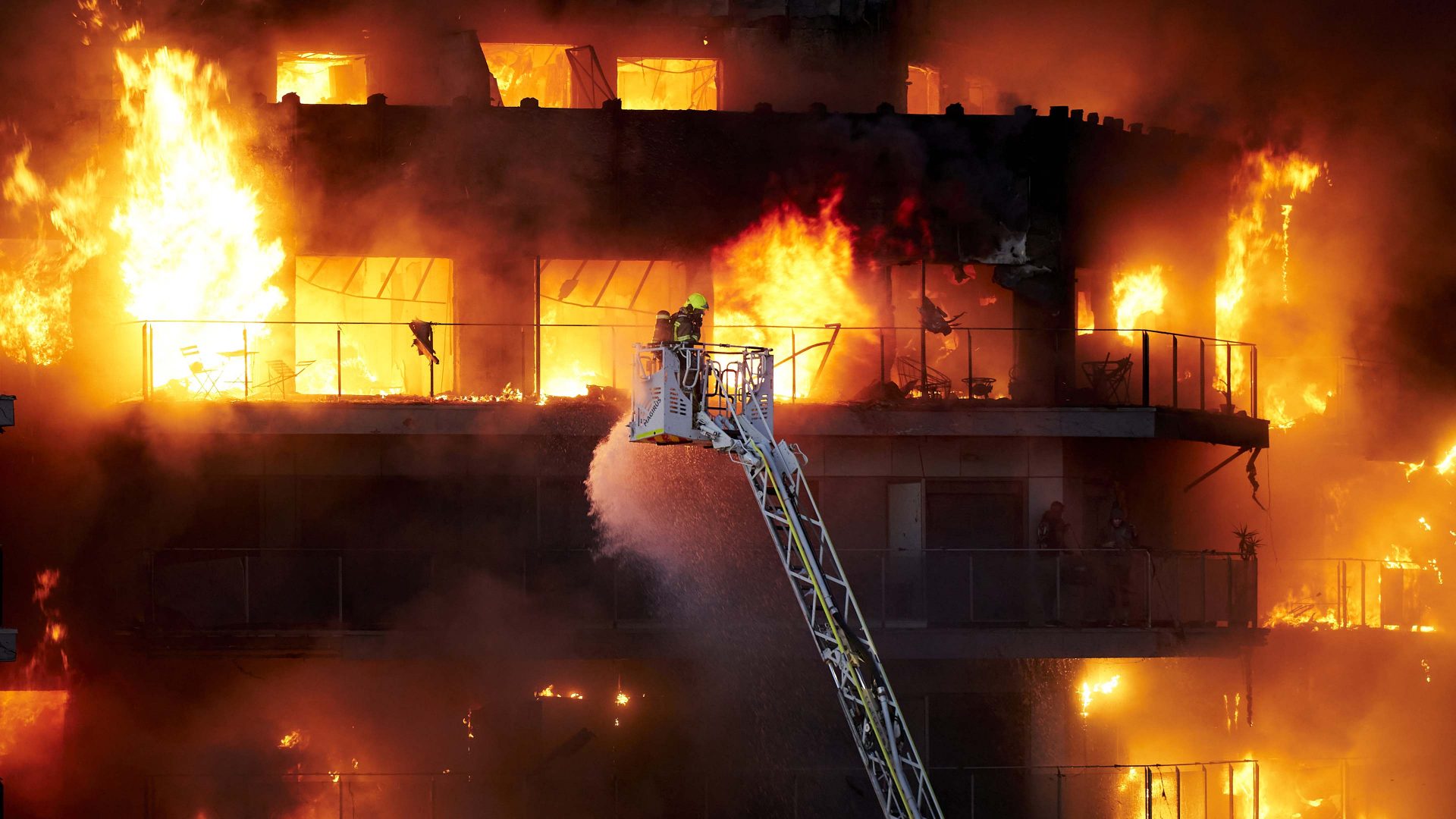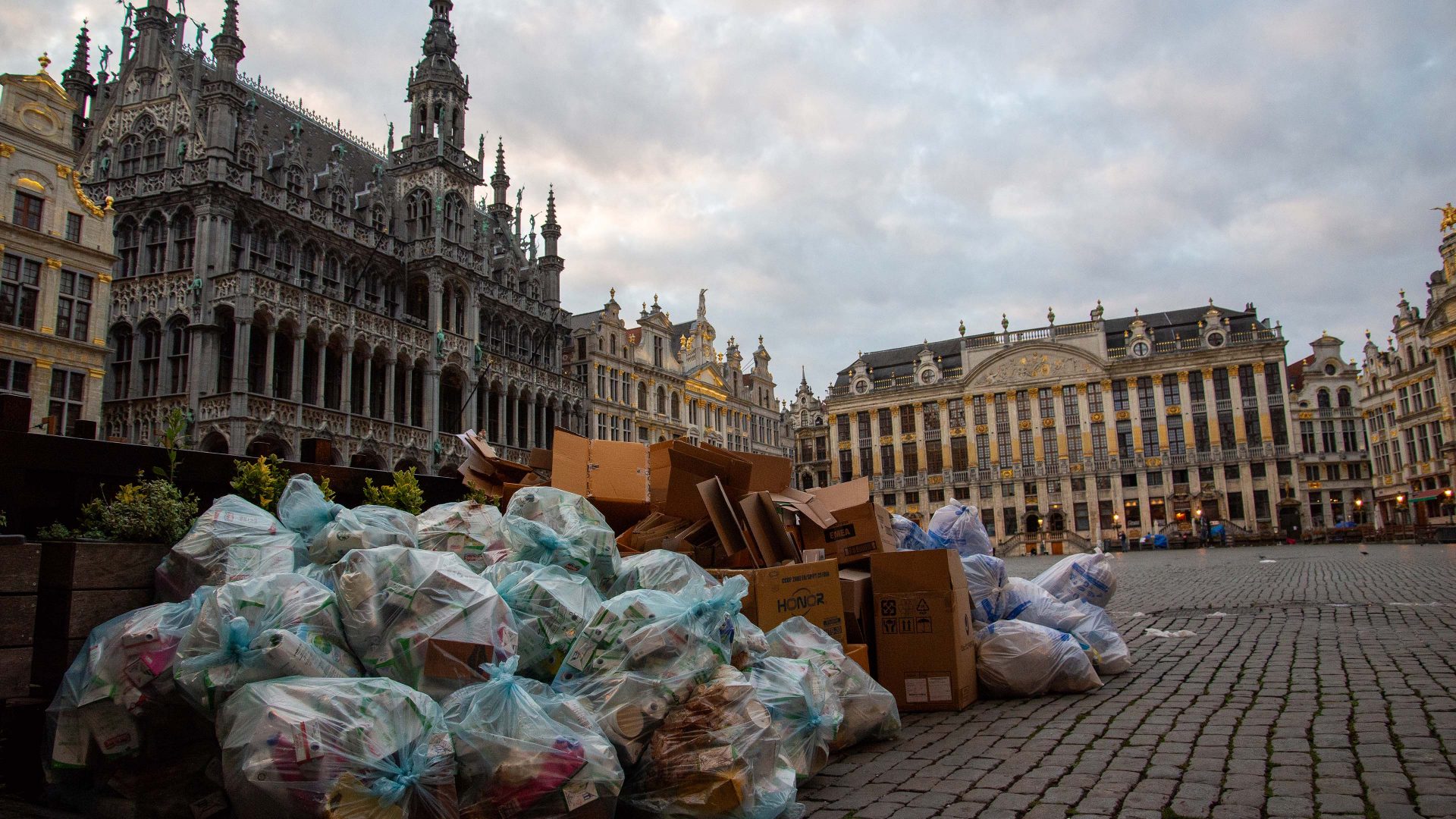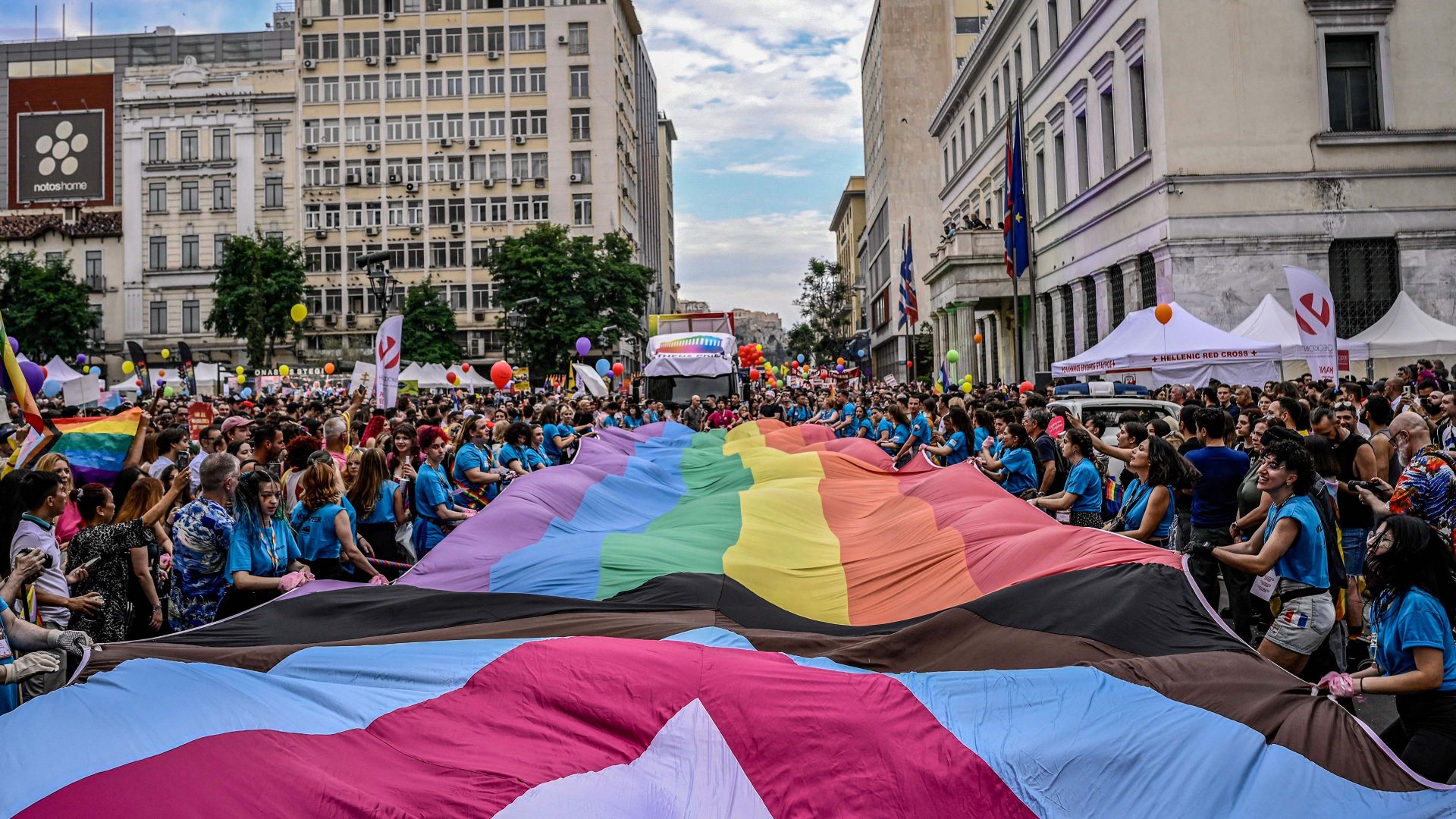In the Campanar neighbourhood of Valencia on Friday afternoon, the stench of stale smoke hangs in the air. The streets are subdued, a city still in shock. As you make your way along Avenida del General Avilés, you come to a roundabout and see why: looming against the backdrop of a deep blue sky, the charred shell of a 14-storey apartment block – or what was an apartment block – and the last wisps of smoke slowly wafting up into shafts of sunlight.
At around 5.30pm the day before, the 138-apartment building had caught fire. Within half an hour, the entire structure was writhing in flames and pouring out thick plumes of smoke. Strong winds made it worse, but experts are already pointing to flammable building materials as a possible reason the blaze could have spread so quickly. One local person told state broadcaster TVE that it engulfed the building, “within a matter of minutes… as if it was made of cork”.
A gust of wind ripples the police cordons, and beyond are fire engines and ambulances. There are also the white tents of forensic investigators, a team from Spain’s Military Emergency Unit. Firemen are hunched over, drinking water. The pavement is dusted with a thin skin of ash and glass and tree branches and mangled metal. Looking up, every single window is blown out and blackened, the balconies are filled with tables and chairs, laundry racks and bike frames burnt to a crisp. Blocks of cloud and blue sky fill the windows of corner apartments, as the building has been completely hollowed out.
As of Saturday morning, 10 people were confirmed dead. Among the victims was a family of four: mother, father, a three-year-old child, and a newborn baby. Across the roundabout, snippets from newscasters rehearsing their lines wash over when the wind dies down, and clusters of local people mill around, talking quietly among themselves, trying to make sense of it all. A pair of older men disagree about how many are still missing. One says he heard 14 people are unaccounted for, the other says it’s 19.
There was confusion among officials last night too, in the chaos. Firefighters finally managed to enter the building on Friday. Up on the sixth or seventh floor, one emerges on a balcony in breathing apparatus, his uniform luminous against the scorched backdrop of the building. He takes a cautious step, testing the stability, before venturing out. The night before, his colleagues had used a crane to rescue a father and daughter from a balcony as the flames raged around them.
More people arrive, stopping to take pictures and shake their heads. “How is this possible?” asks one woman. Many wonder how the flames could have swallowed up the building so quickly. Spanish media reports that it was relatively new, only finished in 2008, by developers who later went bankrupt. The local newspaper Las Provincias describes it as “a luxury development of the real estate boom” in the region, and locals mention how expensive the flats there were.
No official cause has been made public yet, but early reports suggest building materials – the facade, specifically – could be the most likely explanation for the fire’s speed. A spokesperson from Valencia’s Industrial Engineers Association claims the building had flammable polyurethane cladding. The potential parallels with Grenfell Tower are all too clear. Ivan Cabrera, director of the School of Architecture at Valencia’s Polytechnic University, made the comparison to Spanish daily El País: “What happened in Valencia is an exact copy of what happened in London six years ago.”
Down below, fire engines slowly come and go. Pieces of paper and debris float from the building and catch in wafts of wind, sending them slowly up into the sunlight. A phone rings and a gruff-sounding man answers it, saying yes, he’s here right now. Everyone stares up at the skeleton of the building – a shell, vacant and abandoned, as though it were a ruin of years ago, not that this time yesterday families were living their lives there, looking forward to the weekend.



